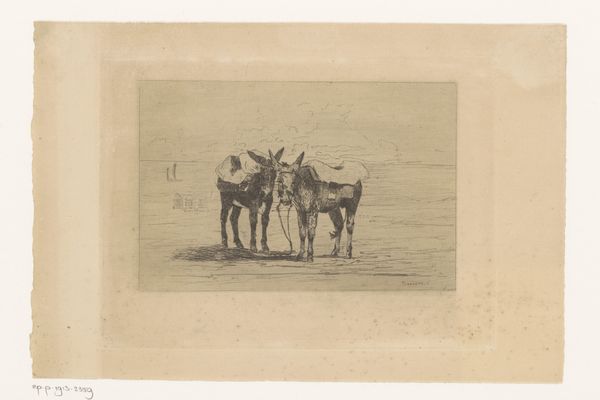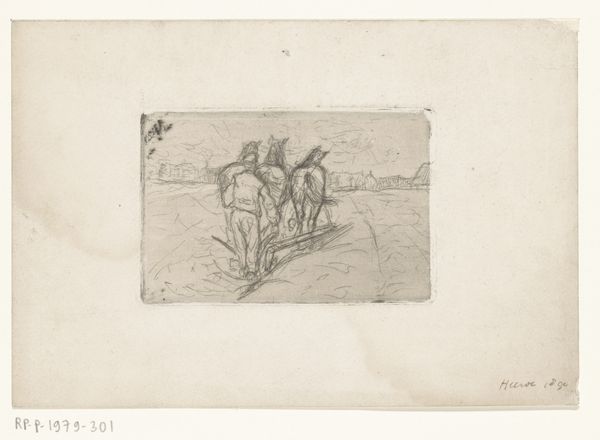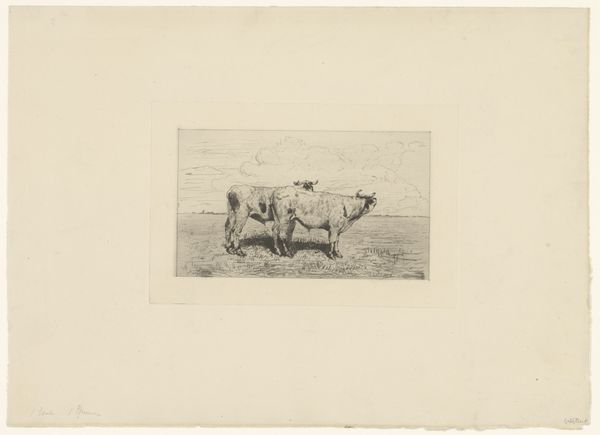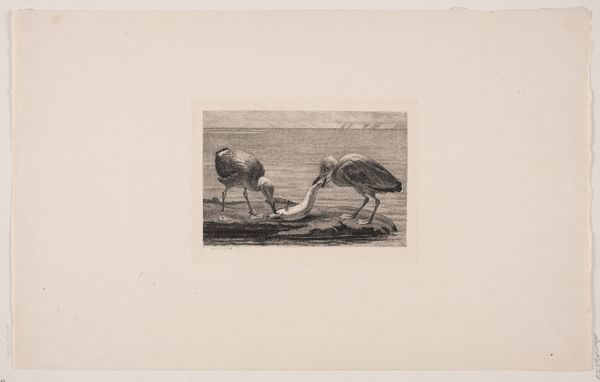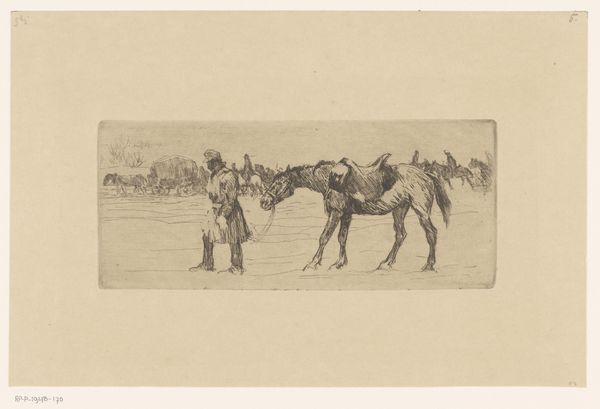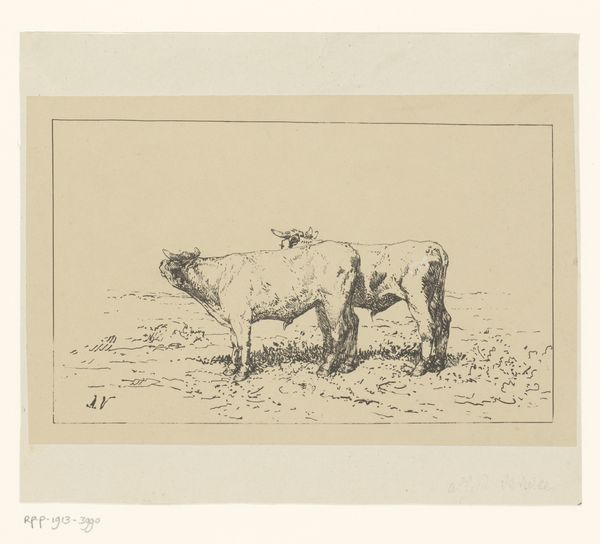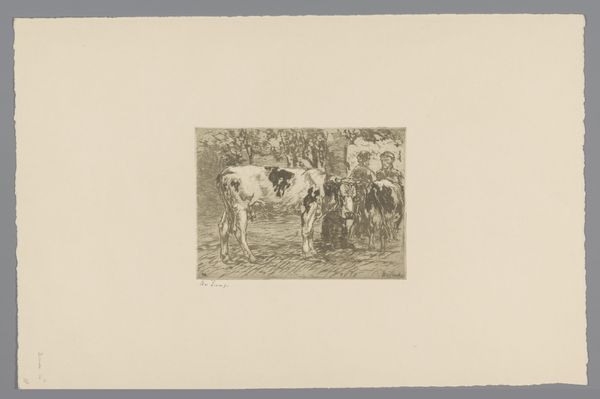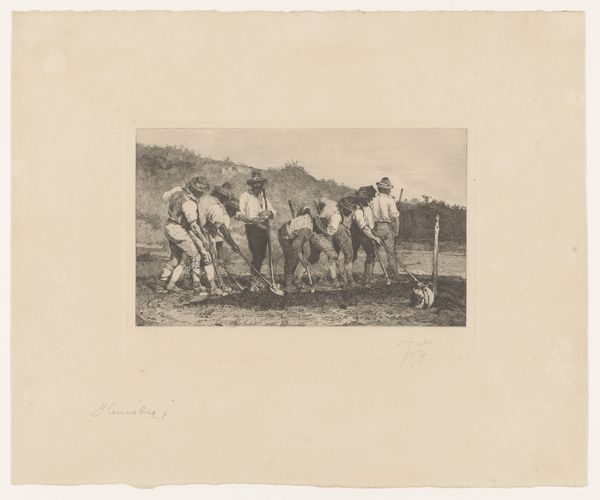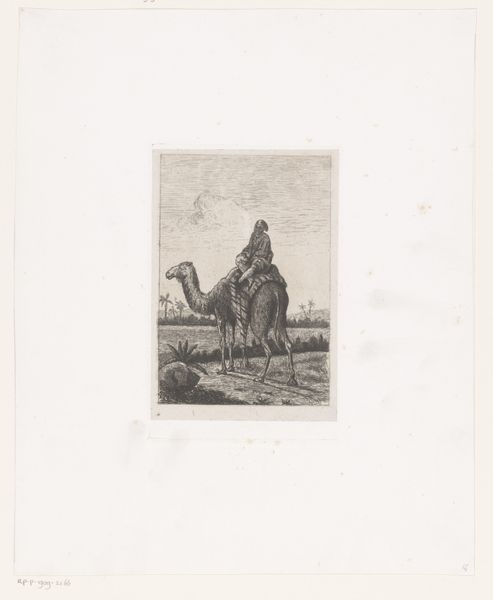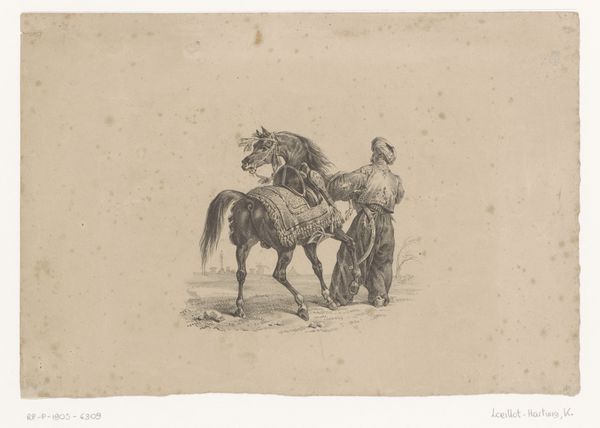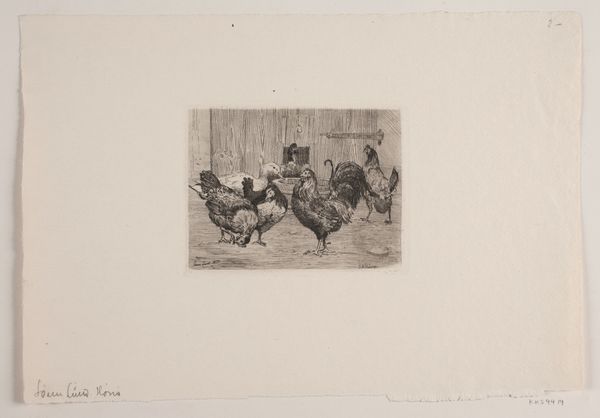
drawing, print, etching, paper
#
drawing
# print
#
etching
#
paper
#
monochrome
Dimensions: height 120 mm, width 156 mm
Copyright: Rijks Museum: Open Domain
Edward Quitton made this etching of a rooster and two hens at the turn of the twentieth century. Etching is a printmaking process. A metal plate, often copper, is coated with a waxy, acid-resistant material called a ground. The artist then scratches an image into the ground, exposing the metal underneath. When the plate is submerged in acid, the exposed lines are eaten away, creating grooves. Ink is then applied to the plate, filling these grooves. Finally, the plate is pressed onto paper, transferring the ink and creating the print. The appeal of etching lies in its fine lines and subtle tonal variations. Because the artist is drawing into a relatively soft ground, rather than directly into the metal, this process allows for a fluid, spontaneous line. But there's labor involved here, too. Quitton would have pulled each print by hand using a printing press. This reproductive technique makes the image available to a wider audience, moving it into the realm of mass culture, and making the labor visible. Considering the materials, the making, and the social context reminds us of the connection between artistic creation, labor, and consumption, and challenges conventional ideas about fine art.
Comments
No comments
Be the first to comment and join the conversation on the ultimate creative platform.

